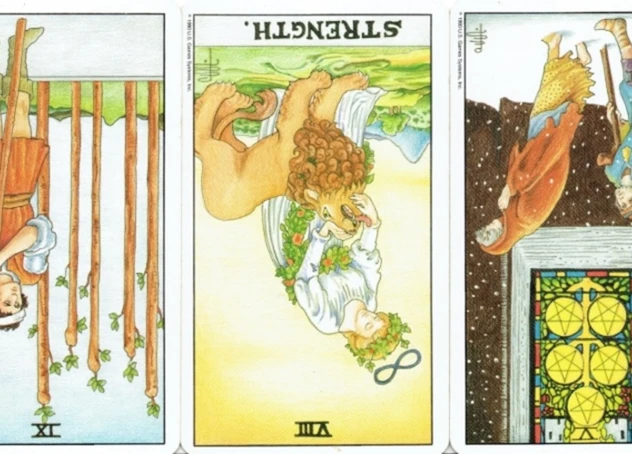Unlocking the hidden meanings behind reversed tarot cards can be a perplexing yet fascinating endeavor. Contradicting the traditional upright position, reversed cards offer a unique perspective that adds depth and complexity to tarot readings. In this article, we will delve into the basics of reversed tarot cards, explore the significance of symbolism in tarot readings, and provide insights into interpreting and deciphering the intricate symbolism found in reversed cards. Whether you are a seasoned tarot reader or just starting your journey with the tarot, understanding the art of contradiction in reversed tarot cards can elevate your readings to new heights.
Contents
- The Basics of Reversed Tarot Cards
- Interpreting Reversed Tarot Card Symbolism
- Enhancing Your Tarot Readings with Reversed Cards
- Combining Symbolism and Intuition in Reversed Tarot Readings
- Avoiding Common Pitfalls in Interpreting Reversed Cards
- Incorporating Reversed Cards in Different Tarot Spreads
- Conclusion
-
Frequently Asked Questions
- 1. Can reversed tarot cards have positive meanings?
- 2. Do the same symbols in upright tarot cards hold different meanings when reversed?
- 3. Are the interpretations of reversed tarot cards fixed or flexible?
- 4. Should reversed cards always be interpreted as negative or reversed meanings?
- 5. How can I incorporate reversed tarot cards into my readings?
- 6. Can reversed tarot cards indicate timing or events in a reading?
- 7. How can I overcome biases against reversed tarot cards?
- 8. Can reversed tarot cards indicate internal psychological states?
- 9. Should reversed tarot cards always be considered in a reading?
- 10. Are there any specific spreads that work well with reversed tarot cards?
- References
The Basics of Reversed Tarot Cards
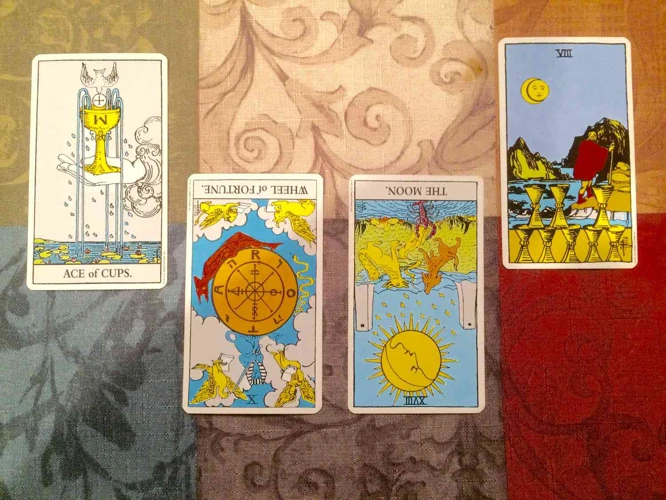
To truly navigate the realm of tarot, it is essential to grasp the fundamentals of reversed tarot cards. Reversed tarot cards are a reflection of the traditional upright cards but hold a distinct energy and meaning when they appear upside down or in a reversed position. However, comprehending the intricacies of reversed tarot cards can be quite perplexing. These cards disrupt the familiar symbolism and introduce a sense of contradiction and ambiguity to the readings. Understanding the hidden messages and symbolic meanings in reversed tarot cards requires delving deeper into the art of tarot interpretation, as well as exploring the symbolism unique to each card when reversed. By unlocking the mystery and uncovering the symbolic meanings within these cards, we can expand our tarot practice and gain greater insight into the messages being conveyed.
1. What are Reversed Tarot Cards?
Reversed tarot cards, as the name suggests, refer to cards that appear in a reversed or upside-down position during a tarot reading. These cards hold a significant role in the world of tarot, offering an alternative perspective to the upright cards. When a card is reversed, its energy and meaning may change or be intensified, presenting a nuanced and complex interpretation. The reversed position of a tarot card can signify various aspects, such as blocked energy, delays, challenges, or hidden influences. It adds depth to the reading by introducing contradictions and highlighting the need for careful analysis and interpretation. Understanding the significance of reversed tarot cards is crucial for a comprehensive reading, as it allows the reader to tap into a deeper level of symbolism and explore the intricate meanings embedded in each card. To explore the symbolic meanings of reversed tarot cards in more detail, you can refer to our article “Reversals Unveiled: Tarot Symbolic Meanings”. By unlocking the mystery and unraveling the symbolic language of reversed tarot cards, a reader can gain a more nuanced understanding of the messages being conveyed during a tarot reading.
2. Understanding the Significance of Reversed Cards
Understanding the significance of reversed cards is a crucial aspect of tarot interpretation that adds depth and nuance to readings. When a card appears upside down or in a reversed position, it introduces a shift in energy and alters the message being conveyed. Reversed cards often indicate an opposing or blocked energy, highlighting areas of conflict, challenges, or hidden influences that need attention. They serve as powerful indicators that prompt the reader to explore the underlying layers of a situation. While upright cards reflect the positive aspects of their symbolism, reversed cards provide an opportunity to delve into the shadow aspects and explore the hidden messages and symbolic meanings within them. It is important to remember that reversed cards should not be interpreted as solely negative or bad omens. Instead, they offer valuable insights and guidance by revealing the contradictions and complexities present in a given situation. By understanding the significance of reversed cards, tarot readers can unlock a deeper level of understanding and provide more accurate and insightful readings.
3. Why Symbolism is Important in Tarot Readings
Symbolism plays a pivotal role in tarot readings, providing layers of depth and meaning to the interpretations. When conducting a tarot reading, it is crucial to understand that the images and symbols on the cards hold significant value. Each symbol has its own unique representation and can evoke specific emotions and energies. By paying attention to these symbols, tarot readers can uncover hidden messages and gain insights into the querent’s situation. The symbolism in tarot cards acts as a universal language that transcends cultural and linguistic barriers. It allows the reader to tap into the collective unconscious and access archetypal energies that resonate with the human experience. Symbolism also helps the reader tap into their intuition and receive guidance from their higher self or spiritual guides. By understanding the importance of symbolism in tarot readings, readers can unlock the profound wisdom contained within each card and provide more accurate and meaningful interpretations for their clients. Whether it’s the delicate balance of Yin and Yang represented by the Magician’s wand or the transformative power symbolized by the Death card, each symbol holds a wealth of information that can greatly enhance the tarot reading experience.
Interpreting Reversed Tarot Card Symbolism
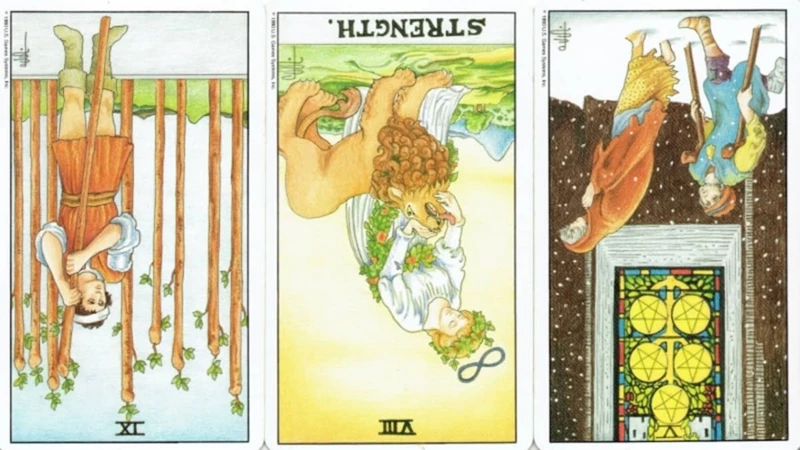
Interpreting the symbolism of reversed tarot cards requires a keen eye for detail and a deep understanding of the intricate messages they convey. Reversed tarot card symbolism can be interpreted by examining the specific symbols, imagery, and colors present in the card, as well as considering their juxtaposition with the upright meanings. It is important to note that while some symbols in reversed cards may mirror their upright counterparts, they often take on a contrasting or nuanced meaning. For example, a reversed sun card may indicate a temporary setback or a need for introspection rather than the usual radiance and positivity. Additionally, paying attention to the placement of the symbol within the card and its relation to surrounding elements can also provide valuable insights. By delving into the intricacies of reversed tarot card symbolism, readers can unlock a wealth of hidden meanings and offer more nuanced and accurate interpretations for their clients.
4. Common Symbolism in Reversed Tarot Cards
When examining reversed tarot cards, it is important to recognize the common symbolism associated with them. These symbols can provide valuable insights into the reversed card’s meaning and enhance our understanding during a tarot reading. Below are some common symbols that frequently appear in reversed tarot cards:
1. Upside-Down Figures: One of the most apparent symbols in reversed tarot cards is the upside-down figure. This reversal of position signifies a reversal of energy or a disruption in the upright card’s inherent meaning. It may indicate a need to approach the card’s interpretation with a dose of caution, as the reversed energy brings a contradictory element to the reading.
2. Blocked or Inhibited Energy: Reversed cards often represent blocked or inhibited energy in the area that the specific card governs. For instance, a reversed Ace of Cups may indicate emotional blockages or difficulty in expressing feelings. Understanding this symbolism allows us to address these blockages and work towards resolution and growth.
3. Lack of Balance: Reversed tarot cards frequently suggest a lack of balance or harmony in the situation being examined. This could indicate an imbalance between opposing forces or a disruption in the natural flow of energy. Paying attention to this symbolism can help identify areas that require attention or restoration of equilibrium.
4. Reversed Numerical Values: In addition to visual symbolism, the numerical value of a reversed card can also carry significance. For example, a reversed Three of Swords may highlight the challenging aspects of the number three, such as conflicts or struggles. It is crucial to consider both the upright and reversed meanings of the numerical values to obtain a comprehensive interpretation.
5. Resistance or Delay: Reversed tarot cards often indicate resistance or delays in the manifestation of the card’s energy. This symbolism suggests that external factors or internal resistance may be hindering progress or causing setbacks. Recognizing this symbolism can prompt us to explore the causes of resistance and find ways to overcome it.
It is worth noting that these are general observations, and the exact symbolism of each reversed tarot card can vary depending on the card’s specific imagery, the surrounding cards, and the intuition of the reader. By familiarizing ourselves with the common symbolism found in reversed tarot cards, we can decode their messages more effectively and gain a deeper understanding of the readings we conduct.
5. How to Decipher Symbolism in Reversed Cards
Deciphering the symbolism in reversed tarot cards requires a keen eye for detail and a deep understanding of tarot symbolism. When a card appears in a reversed position, its symbolism may be altered or carry a different significance. To decipher the symbolism in reversed cards, it is important to consider several factors.
Firstly, examine the traditional meaning of the card when upright. This will serve as a baseline for understanding how the reversed position may contradict or modify the original message. Pay attention to the elemental associations, numerological influences, and overall theme of the card.
Next, observe any visual cues or changes in the imagery of the card. Symbols that were once upright may now appear upside down or inverted. These shifts can provide clues about the reversed card’s meaning. Additionally, pay attention to any subtle details or changes in the artwork that may point to a contradiction or alternative interpretation.
Utilize your intuition and personal connections to the card as well. Allow yourself to tap into your own psychic abilities and inner wisdom to gain insight into the reversed symbolism. Trust your instincts and let your intuition guide you in understanding the deeper meaning behind the reversed card.
Lastly, consider the surrounding cards and the overall context of the reading. The presence of other reversed cards or specific card combinations can influence the symbolism and provide additional layers of meaning. Take note of any patterns or themes that emerge when interpreting reversed cards in relation to one another.
Deciphering the symbolism in reversed tarot cards can be a complex yet rewarding process. By examining the traditional meanings, analyzing visual cues, tapping into your intuition, and considering the context, you can unravel the enigmatic messages contained within these intriguing cards. Remember, practice and experience are key to developing your skills in reading and interpreting reversed tarot cards. Embrace the art of contradiction and embrace the unique insights that reversed cards bring to your tarot practice.
6. Examples of Contradictory Symbolism in Reversed Cards
Examples of contradictory symbolism in reversed tarot cards highlight the fascinating interplay between the traditional meanings of the card and its reversed position. Here are a few intriguing examples:
1. The Fool: In its upright position, The Fool represents new beginnings and taking leaps of faith. However, when reversed, it can indicate recklessness or a missed opportunity for growth. It serves as a cautionary reminder to exercise caution and think before acting impulsively.
2. The Lovers: When upright, The Lovers symbolize harmony, love, and partnership. In its reversed position, it can suggest disharmony, unrequited love, or difficulties in relationships. This contradictory symbolism prompts introspection and examination of the balance and communication within partnerships.
3. The Tower: In an upright position, The Tower signifies sudden change and upheaval. Reversed, it may suggest resisting necessary change, clinging to outdated structures, or avoiding necessary transformations. This contradiction emphasizes the need to embrace change for growth and personal evolution.
4. The Moon: In its upright position, The Moon represents intuition, dreams, and the subconscious mind. Reversed, it can indicate confusion, deception, or hidden fears. This contradictory symbolism urges individuals to trust their intuition and delve deeper into the hidden aspects of their psyche.
5. The Hierophant: When upright, The Hierophant represents tradition, conformity, and following established systems. Reversed, it can signify rebellion, questioning authority, or breaking away from conventional beliefs. This contradiction encourages individuals to challenge societal norms and seek a unique path of spiritual growth.
These examples demonstrate how the reversed position of tarot cards introduces fascinating contradictions and complexities to their symbolism. By exploring and understanding these contradictions, tarot readers gain a deeper appreciation for the intricate layers of meaning present in reversed tarot cards.
Enhancing Your Tarot Readings with Reversed Cards
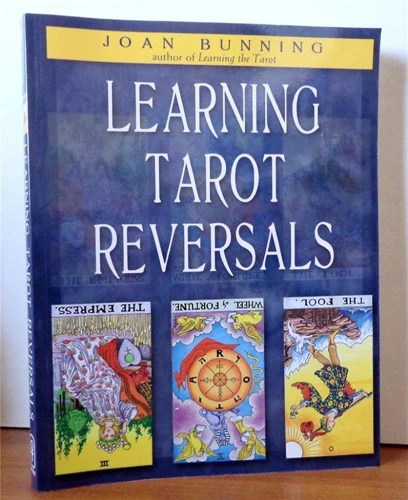
Integrating reversed cards into your tarot readings can enhance the depth and accuracy of your interpretations. These cards offer a different perspective, acting as a counterbalance to the upright cards. By blending both reversed and upright cards, you create a more nuanced and balanced interpretation of the reading. Reversed cards can also serve as indicators of blocked energy or potential obstacles in a person’s life. They highlight areas that require attention and provide an opportunity for growth and transformation. By incorporating reversed cards in your readings, you tap into a richer symbolism that uncovers hidden aspects and adds layers of meaning. This approach allows for a more comprehensive understanding of the querent’s journey and brings forth valuable insights for their path forward.
7. Blending Reversed and Upright Cards for a Balanced Interpretation
When it comes to tarot readings, incorporating both reversed and upright cards can provide a more comprehensive and balanced interpretation. Blending these two types of cards allows for a deeper exploration of the energies and messages present in a reading. Upright cards often represent the more positive aspects of a situation, while reversed cards signify challenges or obstacles. By combining the two, readers can gain a more nuanced understanding of the nuances and complexities within a specific tarot spread. For example, if a reading contains mostly upright cards with just a few reversed cards, it may indicate that the overall energy is positive but still carries some underlying challenges or potential roadblocks. On the other hand, if the majority of the cards are reversed, it may suggest a period of stagnation or difficulty in the querent’s life. By blending reversed and upright cards, readers can provide a more holistic interpretation that encompasses both the positive and negative aspects of a situation, allowing for greater clarity and insight.
8. Using Reversed Cards to Identify Blocked Energy or Potential Obstacles
When it comes to tarot readings, reversed cards can serve as powerful indicators of blocked energy or potential obstacles in a person’s life. The reversed position of a card often suggests a disruption or imbalance in energy flow. These cards can act as a wake-up call, highlighting areas where there may be resistance or challenges to overcome. To identify blocked energy or potential obstacles, the reader must pay close attention to the symbols and imagery in the reversed cards. These symbols may offer clues about what is causing the blockage or what hurdles lie ahead. For example, a reversed Four of Cups could indicate a state of stagnation or missed opportunities, while the reversed Eight of Swords may suggest feeling trapped or limited by self-imposed beliefs and restrictions. By using reversed cards in this way, readers can gain deeper insights into the areas of a person’s life that may require attention and transformation. Through careful interpretation and analysis, the obstacles indicated by reversed cards can be addressed and resolved, allowing for growth and a renewed sense of direction.
Combining Symbolism and Intuition in Reversed Tarot Readings
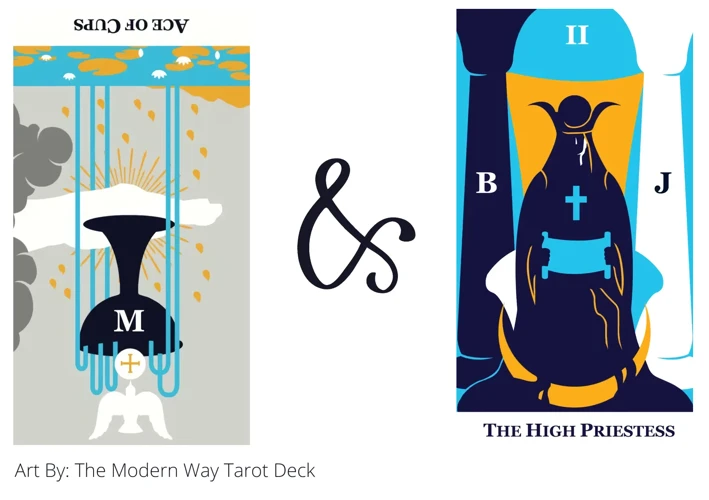
When it comes to interpreting reversed tarot cards, it is important to harmonize the power of symbolism with one’s own intuition. Combining symbolism and intuition in reversed tarot readings allows for a more holistic and accurate understanding of the cards. While symbolism provides a structured framework and a rich tapestry of meanings, intuition brings a personal and intuitive connection to the cards. By trusting our inner wisdom and allowing our intuition to guide us, we can tap into the deeper layers of the reversed cards and unravel their intricate messages. This blending of symbolism and intuition creates a harmonious dance between the universal language of tarot and our own unique interpretation, resulting in more nuanced and insightful readings. As we delve into the mysterious world of reversed tarot cards, let us remember to embrace both the profound symbolism and our intuitive insights to unlock the true essence of these enigmatic cards.
9. Trusting Your Intuition When Interpreting Reversed Cards
Trusting your intuition is key when it comes to interpreting reversed tarot cards. While symbolism plays a significant role in tarot readings, there are times when your intuition can offer valuable insights that go beyond the traditional meanings of the cards. When faced with reversed cards, it’s important to take a moment to tap into your inner wisdom and listen to what your intuition is telling you. Pay attention to the immediate feelings or impressions that these cards evoke in you. Trust that your instincts are guiding you towards a deeper understanding of the message being conveyed. Allow yourself to explore the symbols and imagery in the reversed cards with an open mind, and let your intuition be your compass in unraveling their meanings. Remember, each individual has a unique connection to the tarot, and your intuition serves as a bridge between the cards and your inner knowing. By trusting your intuition, you can unlock the layers of symbolism in reversed cards and uncover the profound insights they hold. Embrace the paradoxes and contradictions presented by these cards and allow your intuition to guide you in providing a more nuanced and personalized interpretation for yourself or your querent.
10. Balancing Symbolism and Personal Insight for Accurate Readings
When it comes to tarot readings, finding the balance between symbolism and personal insight is crucial for accuracy and depth. Symbolism in tarot cards provides a structured and universally recognized language that offers guidance and meaning. It serves as a foundation for interpretation and understanding. However, relying solely on symbolism can sometimes lead to a narrow and rigid interpretation. This is where personal insight comes into play. Each tarot reader brings their unique experiences, intuition, and perspective to the reading. Personal insight allows for a more nuanced and personalized interpretation of the cards. It adds layers of complexity and depth that transcend traditional symbolism. By blending symbolism and personal insight, a tarot reader can tap into their own wisdom and connect more deeply with the querent’s energy, situation, and questions. This fusion not only enhances the accuracy of the reading but also allows for a more meaningful and resonant experience for both the reader and the querent. It is through the delicate balance of symbolism and personal insight that accurate readings can truly come to life.
Avoiding Common Pitfalls in Interpreting Reversed Cards
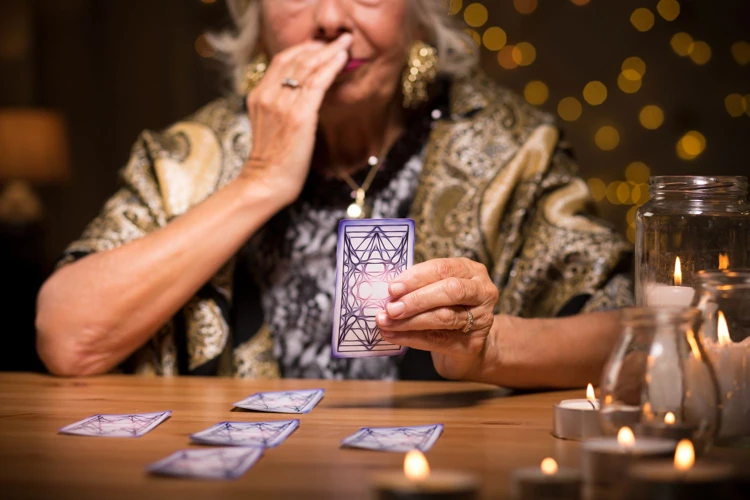
When working with reversed tarot cards, it is crucial to be aware of common pitfalls and avoid falling into them during the interpretation process. One major pitfall to avoid is over-reliance on reversed card meanings. While reversed cards do have their own distinct interpretations, it is essential to consider the surrounding cards and the overall context of the reading. Another common mistake to steer clear of is a lack of contextual understanding. Each card’s meaning is influenced by its position, the question asked, and the other cards in the spread. It is also important to address any negative biases towards reversed cards. Rather than viewing them as inherently negative, embrace the opportunity they provide for deeper exploration and a different perspective. By staying mindful of these potential pitfalls, a tarot reader can navigate the world of reversed cards with greater accuracy and clarity.
11. Over-Reliance on Reversed Card Meanings
Over-reliance on reversed card meanings is a common pitfall that can hinder the accuracy and depth of tarot readings. While reversed cards offer a unique perspective and add layers of interpretation, it is crucial not to solely rely on the reversed meanings. Each tarot card contains a wide range of symbolism and conveys different messages depending on the context of the reading. It is essential to consider the overall energy of the reading, the specific question or intention, and the surrounding cards when interpreting reversed cards. By solely focusing on the reversed meanings, one may overlook important nuances and miss the holistic message of the tarot spread. It is recommended to strike a balance between the meanings of upright and reversed cards. The combination of both orientations provides a more comprehensive and accurate interpretation. Embracing a nuanced approach and avoiding over-reliance on reversed card meanings allows for a more holistic understanding of the reading and ensures that the insights gained are meaningful and insightful.
12. Lack of Contextual Understanding
Lack of contextual understanding is a common pitfall when it comes to interpreting reversed tarot cards. When faced with a reversed card, it is crucial to consider the surrounding cards, the question asked, and the overall context of the reading. Each tarot card carries multiple layers of meaning, and these meanings can be influenced by the cards that surround them. Failing to take into account the context can lead to misinterpretation and inaccurate readings. It is essential to analyze the reversed card in relation to its neighboring cards and the overall narrative they create. Additionally, the question or intention behind the reading should be taken into consideration to ensure a more accurate interpretation. By embracing a holistic approach and considering the contextual factors at play, readers can avoid the pitfall of misinterpreting reversed tarot cards and provide a more insightful and meaningful reading experience. Developing a keen awareness of context is key to unlocking the deeper symbolism within reversed cards and honing one’s tarot reading skills.
13. Addressing Negative Biases towards Reversed Cards
Negative biases towards reversed tarot cards are not uncommon within the tarot community. Some tarot readers may hold the belief that reversed cards only bring negative or challenging energy to a reading. However, it is important to address and overcome these biases in order to fully embrace the richness and depth that reversed cards can offer. One way to address negative biases is to challenge the notion that reversed cards are inherently negative. Instead, consider the reversed position as an opportunity for growth, transformation, and deeper self-reflection. Remember that every tarot card, whether upright or reversed, carries a spectrum of meanings and energies. Another approach to overcoming biases is to explore the subtleties and nuances within reversed cards. Pay attention to the balance between light and shadow, positive and negative aspects within each card’s symbolism. By acknowledging and appreciating the contradictions and complexities of reversed cards, we can develop a more well-rounded and unbiased understanding of their significance. It is also crucial to approach reversed cards with an open mind and a willingness to explore new interpretations and possibilities. Trust your intuition and rely on the guidance of the tarot itself rather than preconceived notions or biases. With practice and a shift in mindset, we can overcome negative biases and fully embrace the valuable insights that reversed cards bring to our tarot readings.
Incorporating Reversed Cards in Different Tarot Spreads
When it comes to conducting tarot readings, incorporating reversed cards adds a layer of depth and nuance to the interpretation process. One of the key aspects of tarot spreads is the strategic placement of cards in specific positions that represent different aspects of a question or situation. Understanding how to incorporate reversed cards in different tarot spreads can greatly enhance the accuracy and insightfulness of the reading. Whether you’re using the popular Past-Present-Future spread, the traditional Celtic Cross spread, or a specialized Relationship spread, reversed cards bring forth their unique energy and symbolism to provide a more comprehensive analysis. They offer a glimpse into hidden obstacles, internal conflicts, and blocked energies. By navigating the perplexing terrain of reversed card meanings within different spreads, tarot readers can unlock a wealth of information, guiding their querents towards a clearer understanding of their circumstances.
14. Reversed Cards in Past-Present-Future Spreads
When incorporating reversed cards into Past-Present-Future spreads, their presence can offer profound insights into the timeline of events and the energies at play. In this spread, the cards are laid out in three separate positions, representing different time periods. The reversed cards in this context add an extra layer of complexity and contradiction, signaling potential challenges, obstacles, or unresolved issues from the past that may continue to influence the present and future. When interpreting reversed cards in the Past position, it suggests that there are unresolved issues or lessons from the past that still need to be addressed. These reversed cards may indicate patterns or cycles that need to be broken or healed before progress can be made. In the Present position, reversed cards can signify current blocks or challenges that are hindering progress or causing internal conflict. Pay attention to the specific symbolism of the reversed cards to gain further insight into the nature of these obstacles. Lastly, reversed cards in the Future position can indicate potential future hurdles or outcomes that may manifest if the current path continues unchanged. These reversed cards serve as cautionary messages, urging the seeker to take action in order to avoid undesired outcomes. It is important to approach the interpretation of reversed cards in Past-Present-Future spreads with an open mind and consider the overall energy and symbolism of the cards in their respective positions. By acknowledging and addressing the messages of the reversed cards, one can gain a deeper understanding of the influences shaping their journey and make informed decisions moving forward.
15. Reversed Cards in Celtic Cross Spreads
When it comes to incorporating reversed cards in Celtic Cross spreads, a renowned and widely used tarot spread, the presence of reversed cards adds an extra layer of depth and complexity to the reading. In this popular spread, the reversed cards can offer valuable insights into the challenges, obstacles, and underlying influences in a person’s life.
To interpret reversed cards in Celtic Cross spreads, it is crucial to consider their position and their relationship with the surrounding cards. A reversed card in the “Present” position may indicate current obstacles or challenges that the querent is facing. It could suggest a need for introspection or a shift in perspective to overcome these hurdles.
In the “Crossing” position, a reversed card can reveal the conflicting energies or opposing influences that may be at play in the querent’s life. This can provide crucial information about the challenges that need to be addressed to move forward.
When a reversed card appears in the “Foundation” position, it indicates past events or experiences that have a lingering impact on the querent’s current situation. It can suggest unresolved issues or patterns that need to be acknowledged and addressed for personal growth.
In the “Near Future” position, a reversed card may signify potential obstacles or setbacks that the querent may encounter. It serves as a warning to be cautious and prepared for upcoming challenges.
The “Hopes and Fears” position in a Celtic Cross spread can be particularly revealing when a card appears upside down. A reversed card in this position may point to internal conflicting desires or fears that the querent is grappling with. It suggests the importance of exploring and confronting these emotions to find clarity and resolution.
Lastly, when a reversed card is found in the “Outcome” position, it can indicate a possible delay or resistance in achieving the desired outcome. It is an indication that additional effort and a shift in approach may be necessary to reach the desired goal.
Interpreting reversed cards in Celtic Cross spreads requires careful observation and intuition. By focusing on the position and context of the reversed cards, tarot readers can provide more nuanced and insightful readings, helping querents gain a deeper understanding of their current circumstances and the potential paths ahead.
16. Reversed Cards in Relationship Spreads
When it comes to relationship spreads in tarot readings, reversed cards can offer valuable insights into the dynamics and challenges within a partnership. Each reversed card within a relationship spread carries its own unique meaning and symbolism, shedding light on the nuances of the relationship. Here are a few key considerations when interpreting reversed cards in relationship spreads:
1. Communication: Reversed cards may indicate a breakdown in communication or misalignment of intentions. For example, a reversed Ace of Swords could suggest difficulty in expressing thoughts and ideas clearly, leading to conflicts or misunderstandings.
2. Challenges: Reversed cards can highlight obstacles or unresolved issues within the relationship. A reversed Five of Cups may signify lingering grief or emotional baggage that needs to be addressed for the relationship to move forward.
3. Power imbalances: Reversed cards can reveal power imbalances or unhealthy dynamics. A reversed Emperor may indicate a controlling or domineering partner, while a reversed Empress could suggest a lack of nurturing or emotional support.
4. Healing and growth: Reversed cards can also symbolize opportunities for growth and healing within the relationship. A reversed Three of Swords might signify the possibility of healing old wounds and strengthening the bond between partners.
When interpreting reversed cards in relationship spreads, it is important to consider the overall context of the reading and the specific positions of the cards. Additionally, paying attention to the surrounding upright cards can provide further clarity and depth to the interpretations. Remember, the symbolism in reversed tarot cards is not always negative; it offers a chance to recognize areas that need attention and nurturing in order to foster a healthier and more fulfilling relationship.
Conclusion
In conclusion, the art of deciphering symbolism in reversed tarot cards offers a wealth of possibilities for tarot readers. While it may initially be perplexing to interpret the contradicting meanings that arise from reversed cards, delving into their symbolism with an open mind can provide profound insights. By understanding the basics of reversed tarot cards and the significance of symbolism in tarot readings, one can develop a more nuanced understanding of the messages conveyed by these cards. Incorporating both intuition and symbolism is crucial in accurately interpreting reversed cards, as they can reveal hidden truths, blocked energy, and potential obstacles. It is important to avoid common pitfalls such as over-reliance on reversed card meanings and lacking contextual understanding. Instead, strike a balance between symbolism and personal insight to offer more accurate and meaningful readings. By incorporating reversed cards into different tarot spreads, such as past-present-future spreads, Celtic cross spreads, and relationship spreads, readers can gain a more comprehensive understanding of the messages being conveyed. Ultimately, the art of interpreting reversed tarot cards allows for a deeper exploration of the tarot’s wisdom, providing guidance and clarity to those seeking answers.
Frequently Asked Questions
1. Can reversed tarot cards have positive meanings?
Yes, reversed tarot cards can convey positive meanings. While the traditional upright position often represents the optimal or desired outcome, reversed cards offer a different perspective that may suggest growth, introspection, or a need to overcome challenges in order to achieve positive outcomes.
2. Do the same symbols in upright tarot cards hold different meanings when reversed?
In many cases, the symbols in reversed tarot cards retain their core meanings but may be expressed in a contradictory or altered manner. The inversion of the card can introduce nuances, emphasizing hidden or subconscious aspects, or suggesting a need for introspection and reevaluation.
3. Are the interpretations of reversed tarot cards fixed or flexible?
The interpretations of reversed tarot cards can vary depending on the reader, the surrounding cards, and the specific question or context of the reading. While there are traditional interpretations, it is essential for readers to trust their intuition and consider the unique nuances presented by the reversed cards in each reading.
4. Should reversed cards always be interpreted as negative or reversed meanings?
No, reversed cards should not always be seen as negative or reversed interpretations. While they may suggest challenges, obstacles, or areas for growth, they can also provide valuable insights, opportunities for self-reflection, and alternative perspectives that lead to positive outcomes.
5. How can I incorporate reversed tarot cards into my readings?
To incorporate reversed tarot cards, consider shuffling your deck intentionally to include some cards in a reversed position. You can also mix upright and reversed cards in a spread. Additionally, you may choose to read only with upright cards and if a card appears reversed during the reading, consider it as a significant emphasis or a potential blockage.
6. Can reversed tarot cards indicate timing or events in a reading?
Reversed tarot cards can provide insights into timing and events, just like upright cards. However, the reversed position may suggest delays, obstacles, or a need for further introspection before the outcomes or events indicated by the card manifest.
7. How can I overcome biases against reversed tarot cards?
Overcoming biases against reversed tarot cards involves acknowledging that they offer valuable insights and perspectives. Experimenting with reversed interpretations, studying their symbolism, and seeing firsthand how they enhance readings can help dispel any negative biases and expand your tarot practice.
8. Can reversed tarot cards indicate internal psychological states?
Absolutely. Reversed tarot cards often highlight inner psychological states and unconscious influences. They can shed light on deep-seated emotions, fears, desires, and unresolved issues, providing guidance for personal growth and self-awareness.
9. Should reversed tarot cards always be considered in a reading?
Whether or not to consider reversed tarot cards in a reading ultimately depends on personal preference and reading style. Some readers choose to exclude reversed cards entirely, while others incorporate them for a more comprehensive interpretation. Experiment and see what feels most authentic to you.
10. Are there any specific spreads that work well with reversed tarot cards?
Reversed tarot cards can be incorporated into a variety of spreads. In addition to the traditional Celtic Cross or past-present-future spreads, you can create spreads that specifically focus on exploring the contradictions and complex energies associated with reversed cards, or spreads that offer guidance on overcoming challenges and achieving positive growth.
